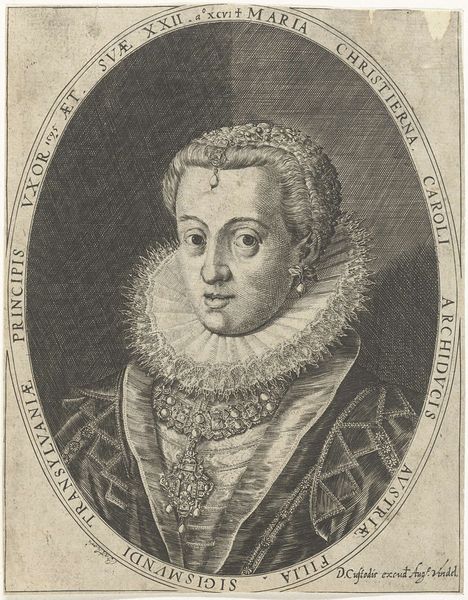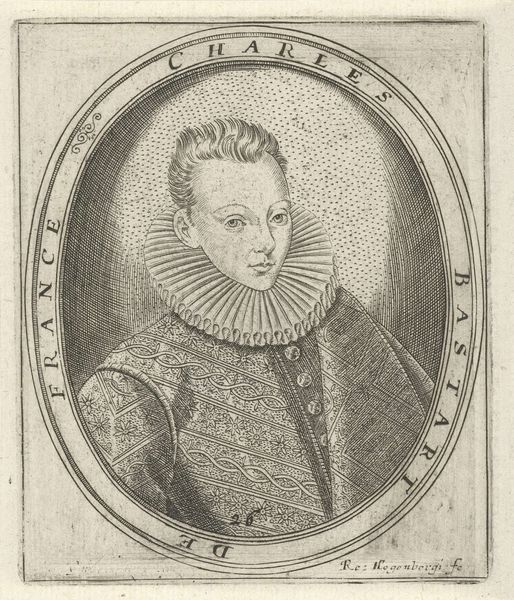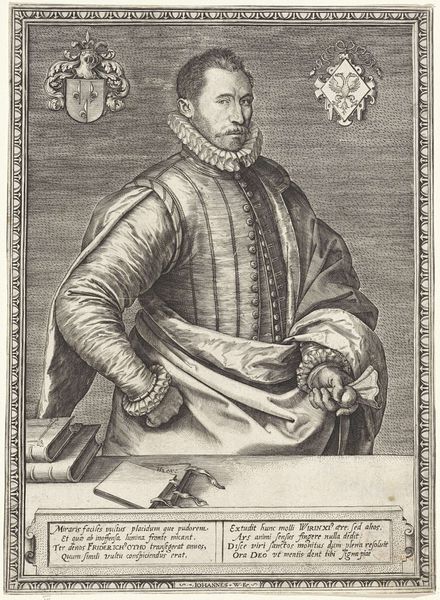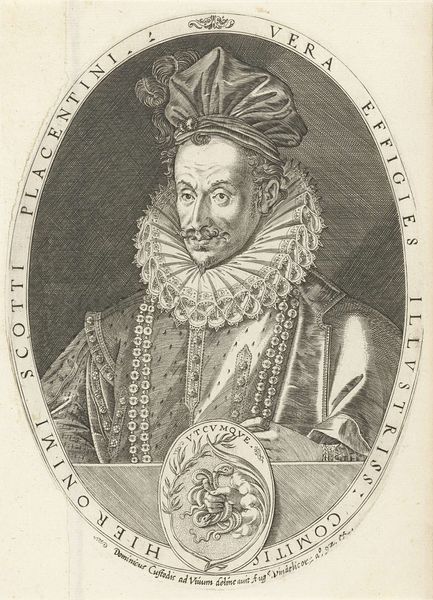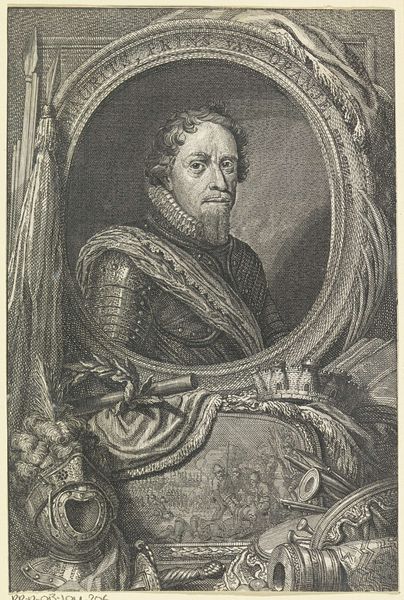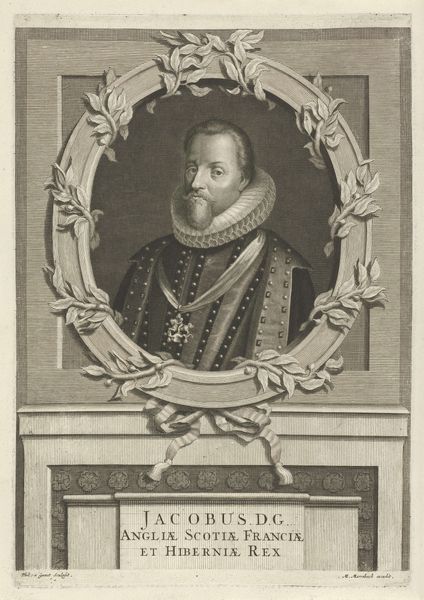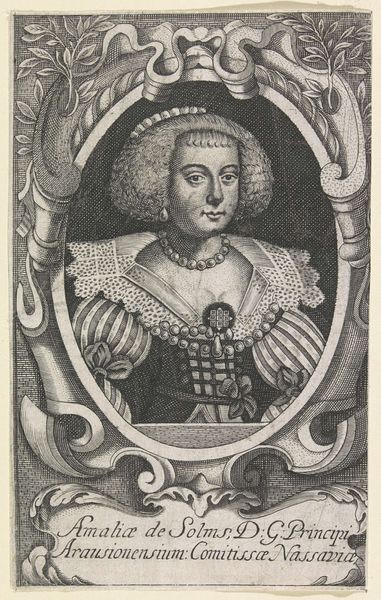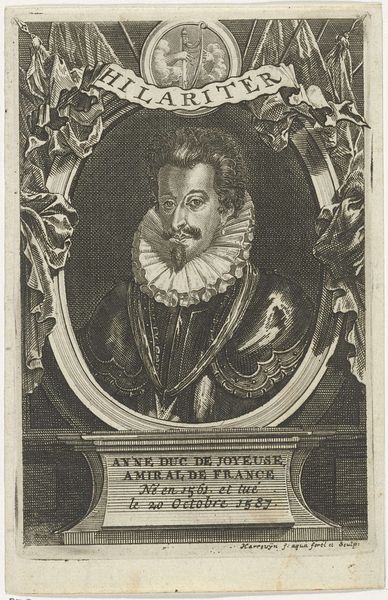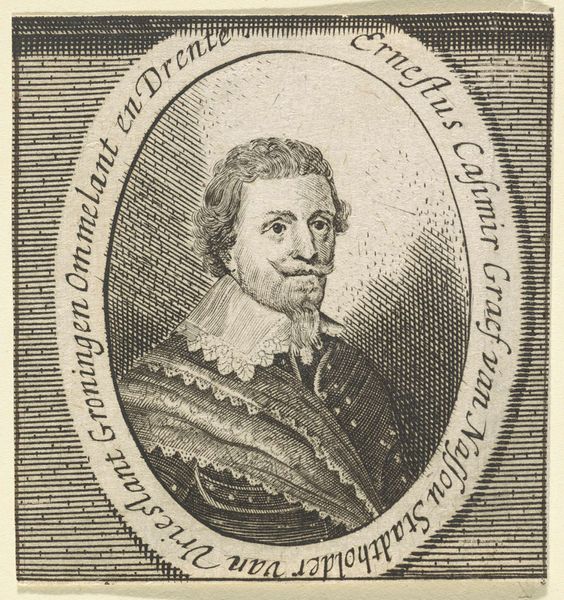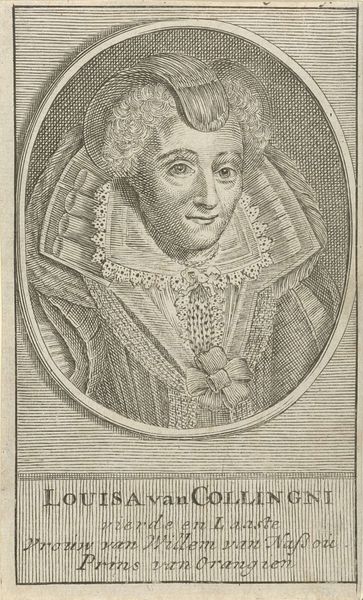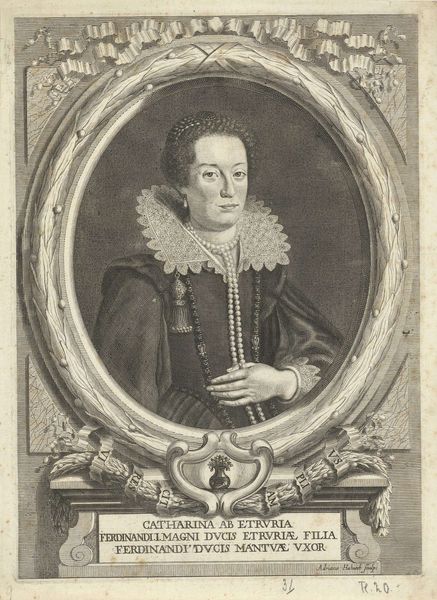
print, engraving
#
portrait
#
baroque
# print
#
figuration
#
history-painting
#
engraving
Dimensions: height 143 mm, width 91 mm
Copyright: Rijks Museum: Open Domain
Curator: Here in front of us, we have a print from between 1682 and 1730 attributed to Jacobus Harrewijn, currently held in the Rijksmuseum: a portrait of Henri de Bourbon, Duke of Montpensier. Editor: It’s captivating. It's almost like looking through a time portal, wouldn't you agree? All those delicate, etched lines… It's incredibly intricate. I can practically smell the ink. There’s a somber quality about it that gives it a feel of importance. Curator: Yes, indeed. Engravings, especially portraits like this, were powerful tools of representation. Notice how the symbols around him amplify his status. For instance, "Suaviter Olet" translates to "It smells sweet." Placed above an image of flowers, this motto signifies that one's virtue and memory can continue to affect the world long after passing on. It reinforces his legacy. Editor: Ah, the eternal scent of aristocracy! Clever, so it's all about constructing the man's ideal. You see a life frozen in formality. That ruff around his neck looks rather tight; how was breathing even possible back then? Curator: Such portraits also speak to larger political dynamics, as visual symbols that legitimized power. And although the ruffled collar may appear physically restraining, its importance to historical dress indicates something beyond mere personal experience; these portraits reflect Baroque ideals. Editor: I am charmed, I admit it. Knowing that this small print once moved through history makes you see something grand within it, an emotional weight tied to bygone ideals, royal lineages, social memory all channeled through something tangible... A tiny portal of the past captured on paper, made permanent through print. Curator: Exactly, it connects us through visible symbols to the ongoing process of negotiating power, memory and, ultimately, identity itself. Editor: In that respect, our conversation is also caught within those swirls of time and paper and history—perhaps as we analyze the work, the work is analyzing us too! Curator: An observation as charming as it is probable! Thanks for pointing that out.
Comments
No comments
Be the first to comment and join the conversation on the ultimate creative platform.

